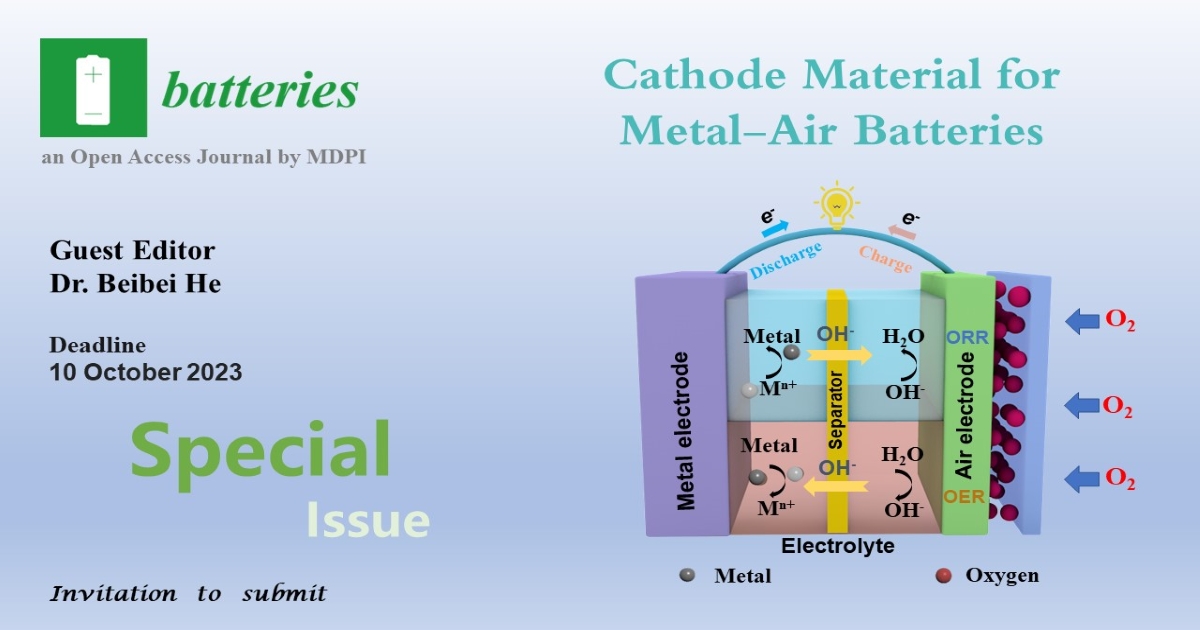Cathode Material for Metal-Air Batteries
A special issue of Batteries (ISSN 2313-0105). This special issue belongs to the section "Battery Materials and Interfaces: Anode, Cathode, Separators and Electrolytes or Others".
Deadline for manuscript submissions: closed (10 October 2023) | Viewed by 4596

Special Issue Editor
Special Issue Information
Dear Colleagues,
Metal-air batteries (MABs) have become attractive candidates for the next generation of energy storage in the past few decades, owing to their high specific energy density as well as the low cost for next-generation green and sustainable energy technologies. There are many types of MABs, including Li-air batteries (LABs), Na-or K-air batteries, Zn-air batteries (ZABs), Al-or Mg-air batteries, and so on. An air electrode integrated with an oxygen electrocatalyst is the most important component, the sluggish kinetics of oxygen reduction reaction (ORR), and oxygen evolution reaction (OER) are primary factors hampering the improvement of performance and energy efficiency of MABs.
Efforts have been made to develop various catalysts for air cathodes in order to improve the ORR/OER activity and cell performance, which is the key to promoting the commercial application of MABs. This Special Issue will present the current status of cathode materials for MABs, propose strategies to solve the above problems, distinguish the structure and mechanism in electrochemical reactions of improving the performance, and ultimately provide a direction to guide the further application and development of MABs.
Dr. Beibei He
Guest Editor
Manuscript Submission Information
Manuscripts should be submitted online at www.mdpi.com by registering and logging in to this website. Once you are registered, click here to go to the submission form. Manuscripts can be submitted until the deadline. All submissions that pass pre-check are peer-reviewed. Accepted papers will be published continuously in the journal (as soon as accepted) and will be listed together on the special issue website. Research articles, review articles as well as short communications are invited. For planned papers, a title and short abstract (about 100 words) can be sent to the Editorial Office for announcement on this website.
Submitted manuscripts should not have been published previously, nor be under consideration for publication elsewhere (except conference proceedings papers). All manuscripts are thoroughly refereed through a single-blind peer-review process. A guide for authors and other relevant information for submission of manuscripts is available on the Instructions for Authors page. Batteries is an international peer-reviewed open access monthly journal published by MDPI.
Please visit the Instructions for Authors page before submitting a manuscript. The Article Processing Charge (APC) for publication in this open access journal is 2700 CHF (Swiss Francs). Submitted papers should be well formatted and use good English. Authors may use MDPI's English editing service prior to publication or during author revisions.
Keywords
- cathode materials
- structural design
- cathode stability
- kinetics and interfaces
- new materials
- advanced characterizations
- mechanism studies
- theoretical calculations





